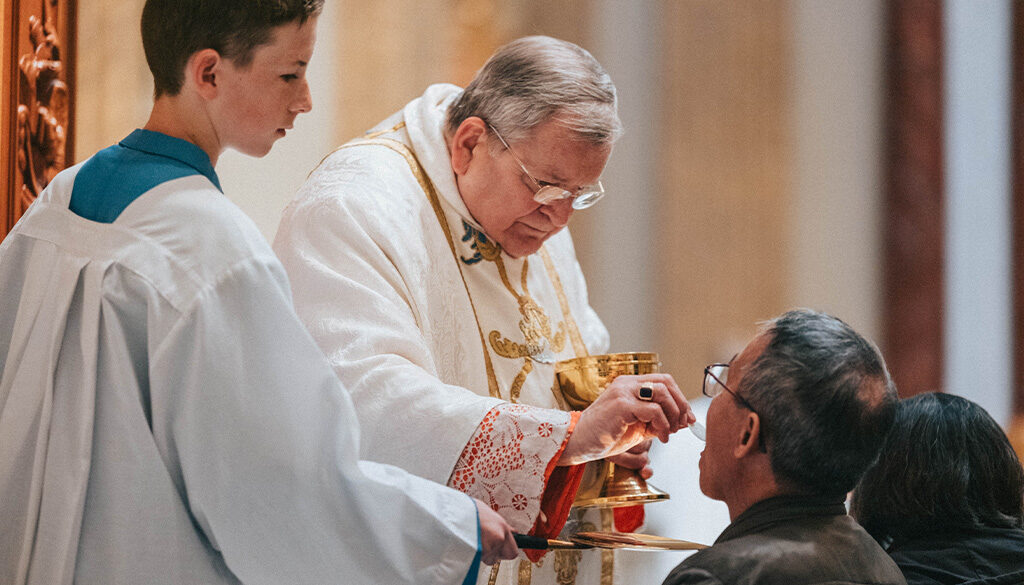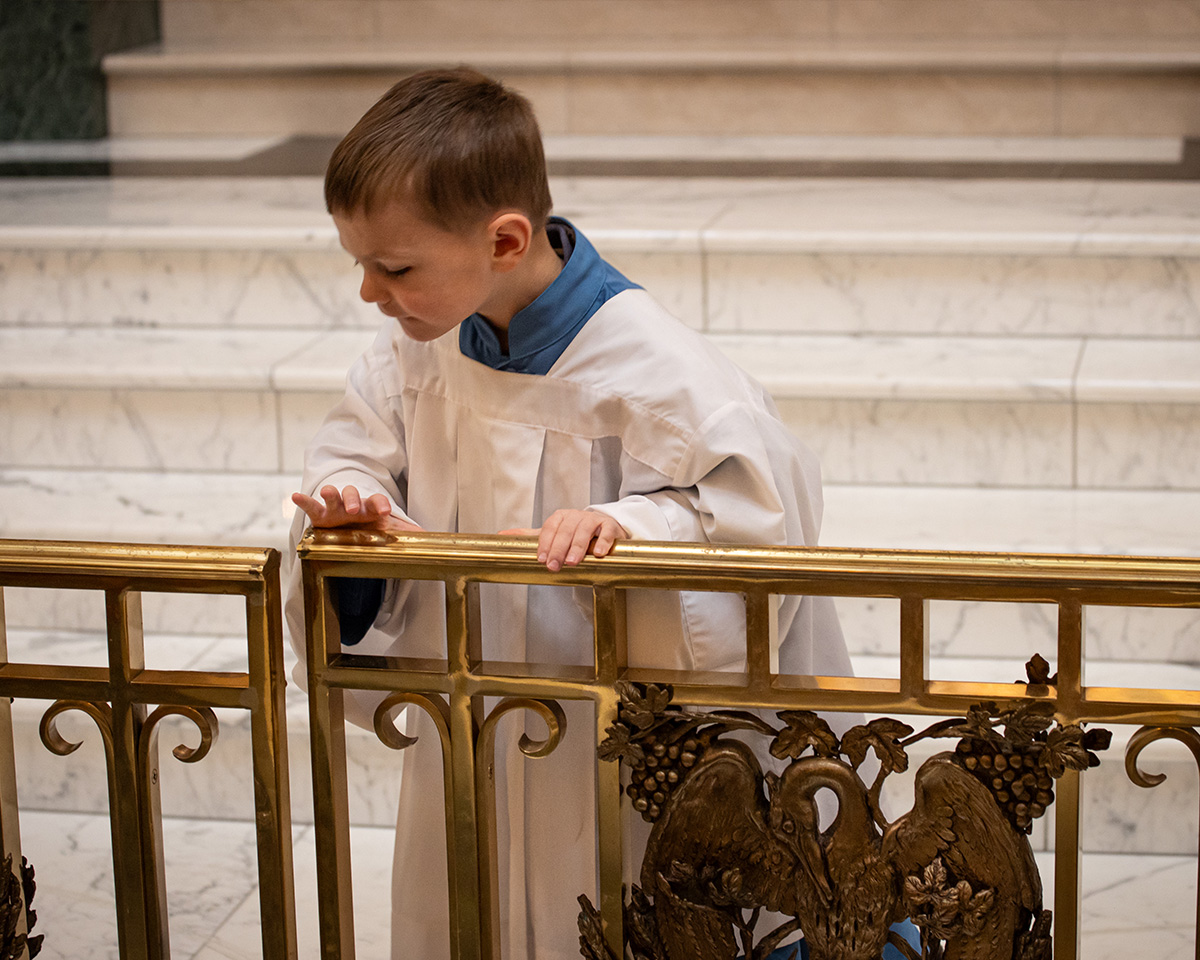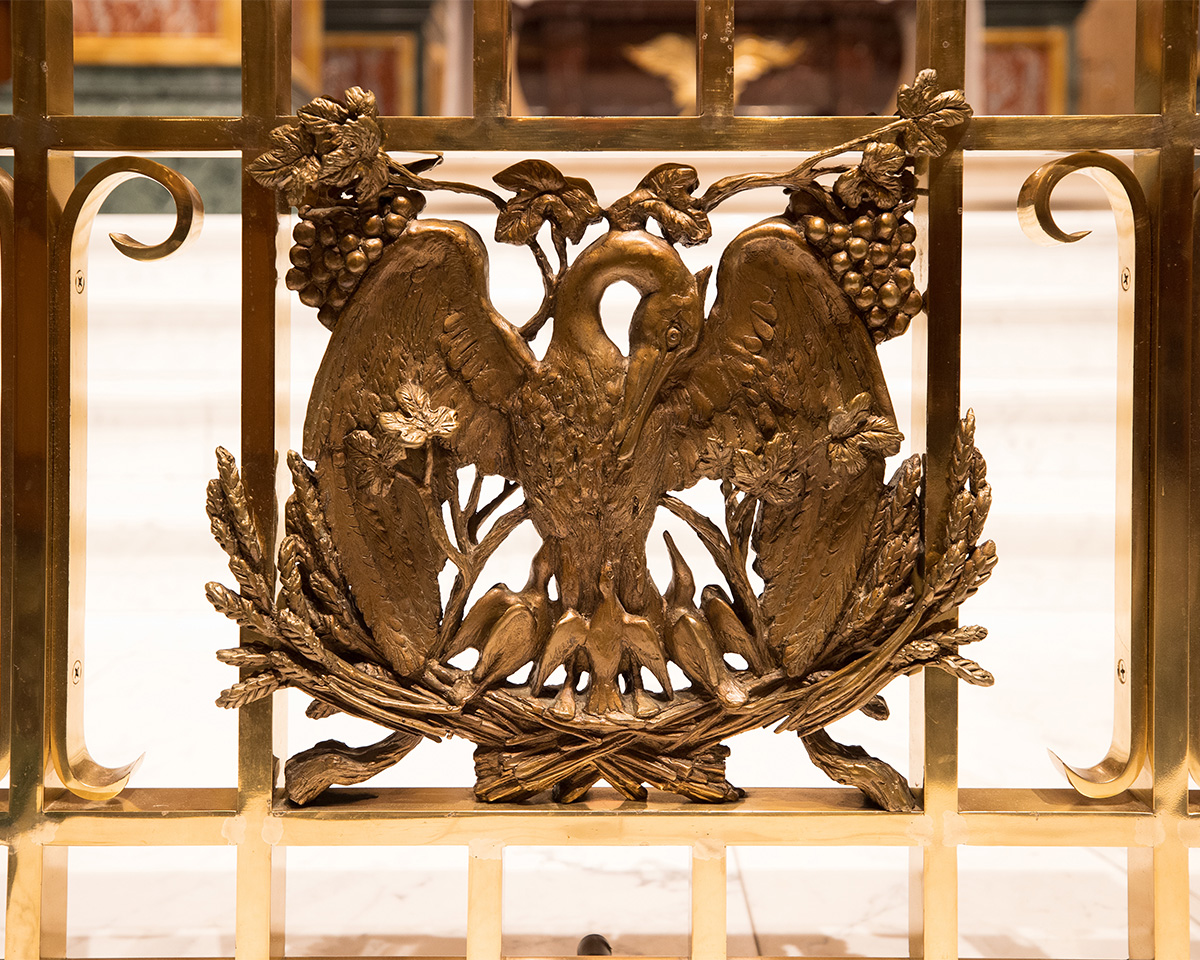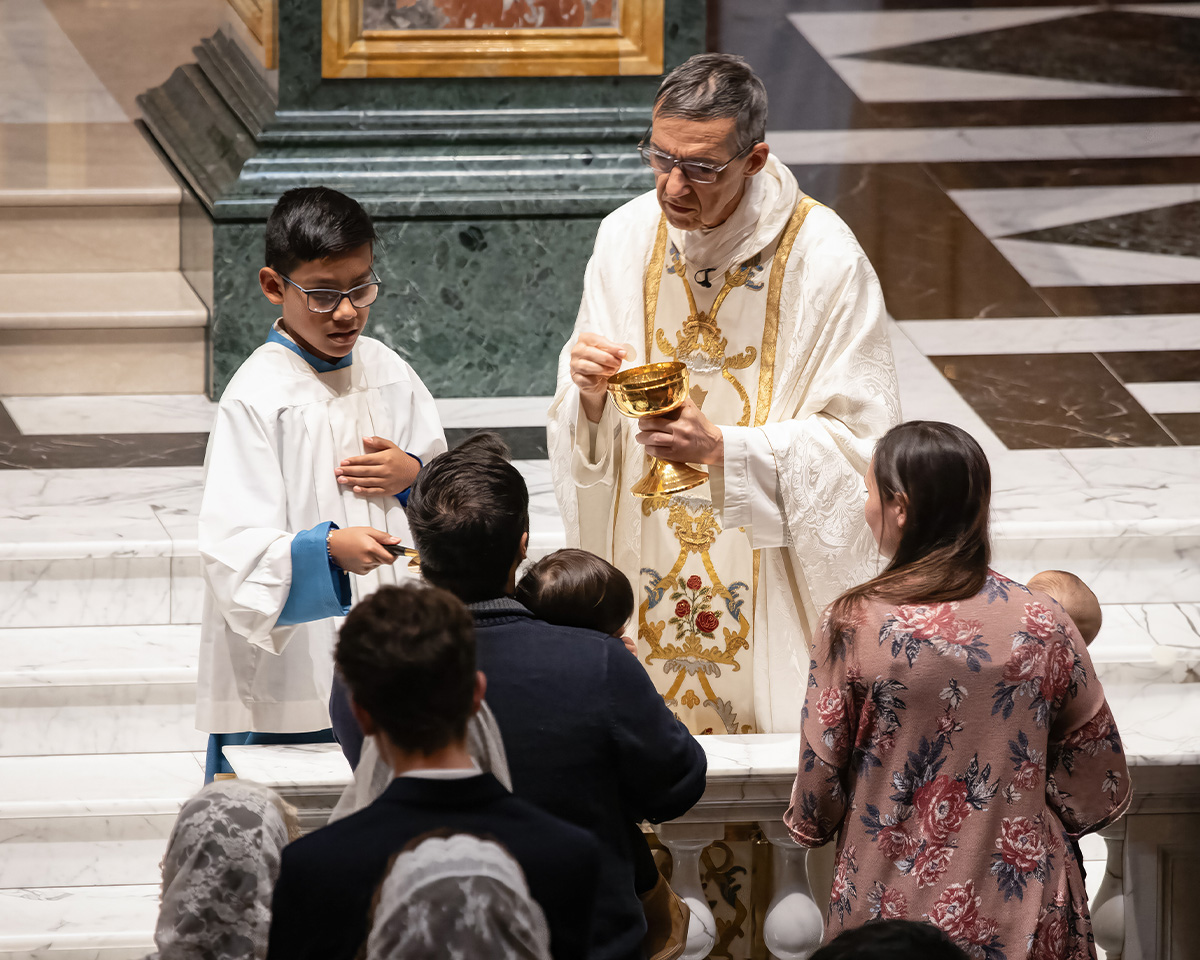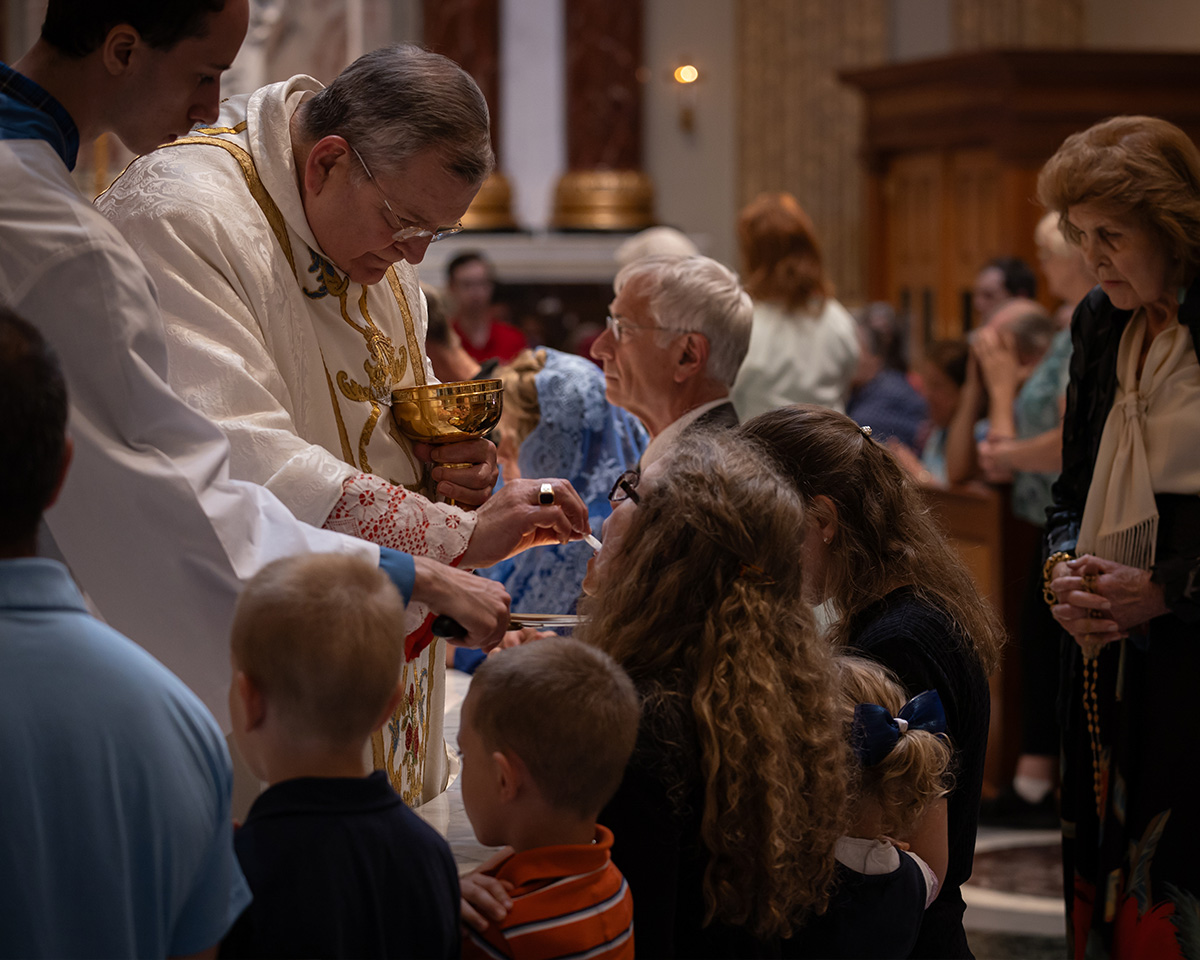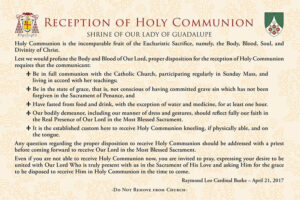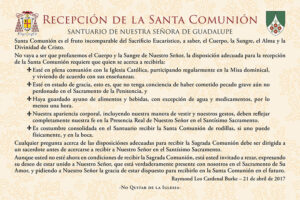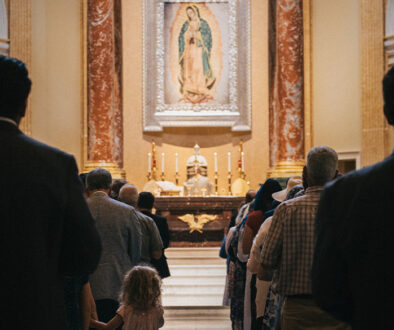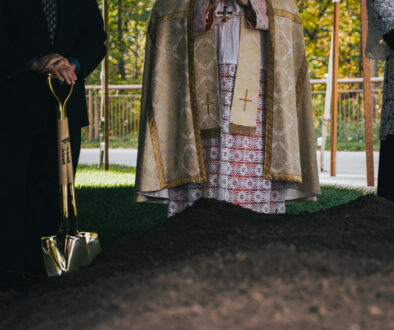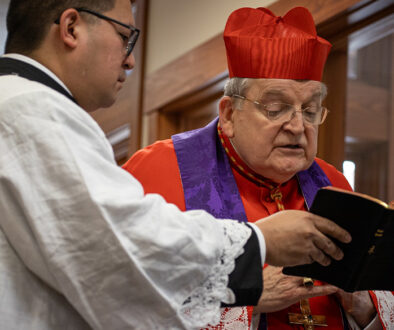Communion Customs
Since the dedication of the Shrine Church in 2008, pilgrims attending Mass at the Shrine of Our Lady of Guadalupe have been told that the custom at the Shrine is to receive Communion kneeling, on the tongue, and at the communion rail. This specific method is not a requirement of the Church; the current General Instruction of the Roman Missal, §160, states that the faithful may receive “either on the tongue or in the hand, at the discretion of each communicant.” Why, then, does the Shrine’s culture include this emphasis on a posture for receiving communion? See the Shrine’s Communion Customs.
At the Communion Rail
The reason is certainly not that receiving in this way means a person is more pious. “People who kneel and receive communion on the tongue are not better or holier simply because they kneel and receive communion on the tongue,” says Executive Director Fr. Paul Check. Moreover, this custom is not a hard and fast rule; it is generally asked but not universally imposed, as Father goes on to explain. “That’s never been something we’ve insisted, and people who stand for whatever reason or people who indicate they’d like to receive in the hand are not to be refused, because that is a valid way, a Church-approved way, to receive Holy Communion … and people do receive reverently in that way.”
Humility in Christ’s Presence
Rather, the custom is intended to be a way of encouraging a mindset of humility before so great a gift. “This is a gift, it’s not something I have a right or title to,” Fr. Check comments. “It’s by God’s generosity and goodness, and my response is to be grateful, humble, reverent.” Of course, this attitude can exist apart from any physical posture; the posture is simply one way of supporting it.
Approaching the Eucharist
Giovanna, a volunteer for the Shrine and a daily communicant, expresses the same concept in more personal terms. “I always want to be reminded of the reality of Who it is that I’m receiving,” she says. “There’s nowhere else in the world where I would get on my knees, open my mouth, and put my tongue out for somebody to give me something … When God is there and He’s waiting to be united with me in the most intimate way possible, I want to receive him in a way that I do not receive anything else.”
Postures for Receiving Communion
Discussing the history of designated postures for receiving Communion, Elizabeth Klein, in Church Life Journal, explains that, while regulations in this area have changed over the centuries, the practice of receiving on the tongue began in order to protect the Host from being dropped. The different forms of this custom in the Church’s Latin and Eastern rites are all “natural developments from the concern of the Early Church to prevent Eucharistic mishaps.” The essential point, she concludes, is that “‘reverence’ is a complex phenomenon that, of course, does involve postures of the body, but most importantly, the attitude of the heart.”
Focus on the Real Presence
Giovanna, too, emphasizes this attitude of the heart, especially a deep wonder and awe at the miracle of the Real Presence: “The God Who’s loving me, whose love for me keeps me in existence, is in my mouth right now… How does that even happen?” This holy wonder inspires her choice to kneel and receive on the tongue, to help keep the miracle vivid for her by a unique outward position. “By kneeling and receiving on the tongue, receiving unlike anything else that I would ever receive on earth, I choose to keep my mind in that place of, ‘Okay, this is actually important. You have to put effort into it.’”
Encountering Christ in the Eucharist
Giovanna’s testimony summarizes well the reason for the Shrine’s custom of asking that pilgrims receive kneeling and on the tongue. Like everything else at the Shrine, it is done to give an outward, visible sign of an invisible, heavenly reality, to encourage minds and hearts toward awareness of God’s closeness. His Real Presence in the Blessed Sacrament is the heart of the Shrine, and receiving that Presence in Holy Communion the greatest encounter with Him that a pilgrimage has to offer. The custom for posture, far from a judgment on differing communities, should be considered a small celebration of the great moment that follows.
Upcoming Shrine Events!
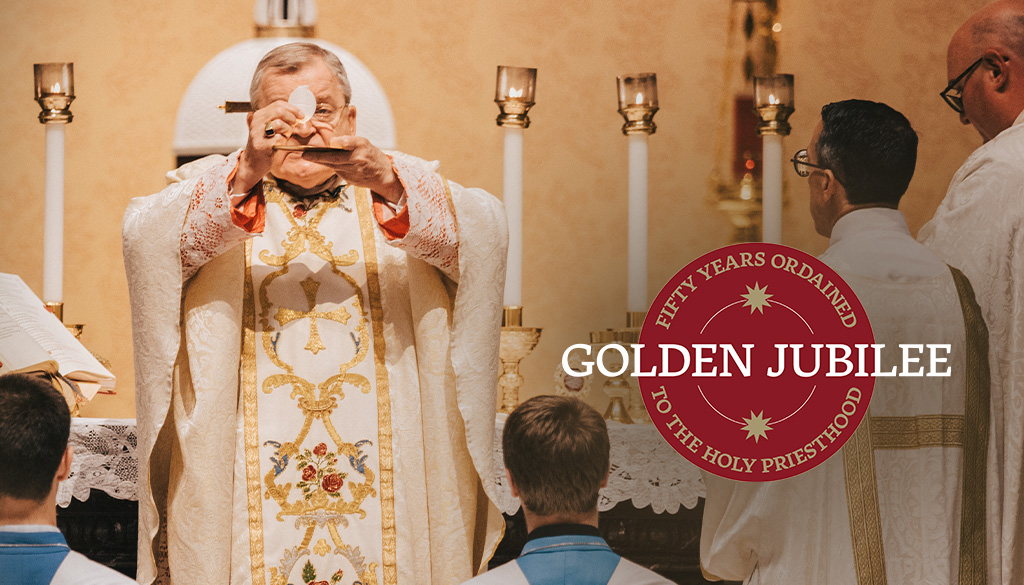
Golden Jubilee Mass
The Solemnity of Ss. Peter & Paul – Cardinal Burke’s 50th Anniversary of Ordination to the Holy Priesthood
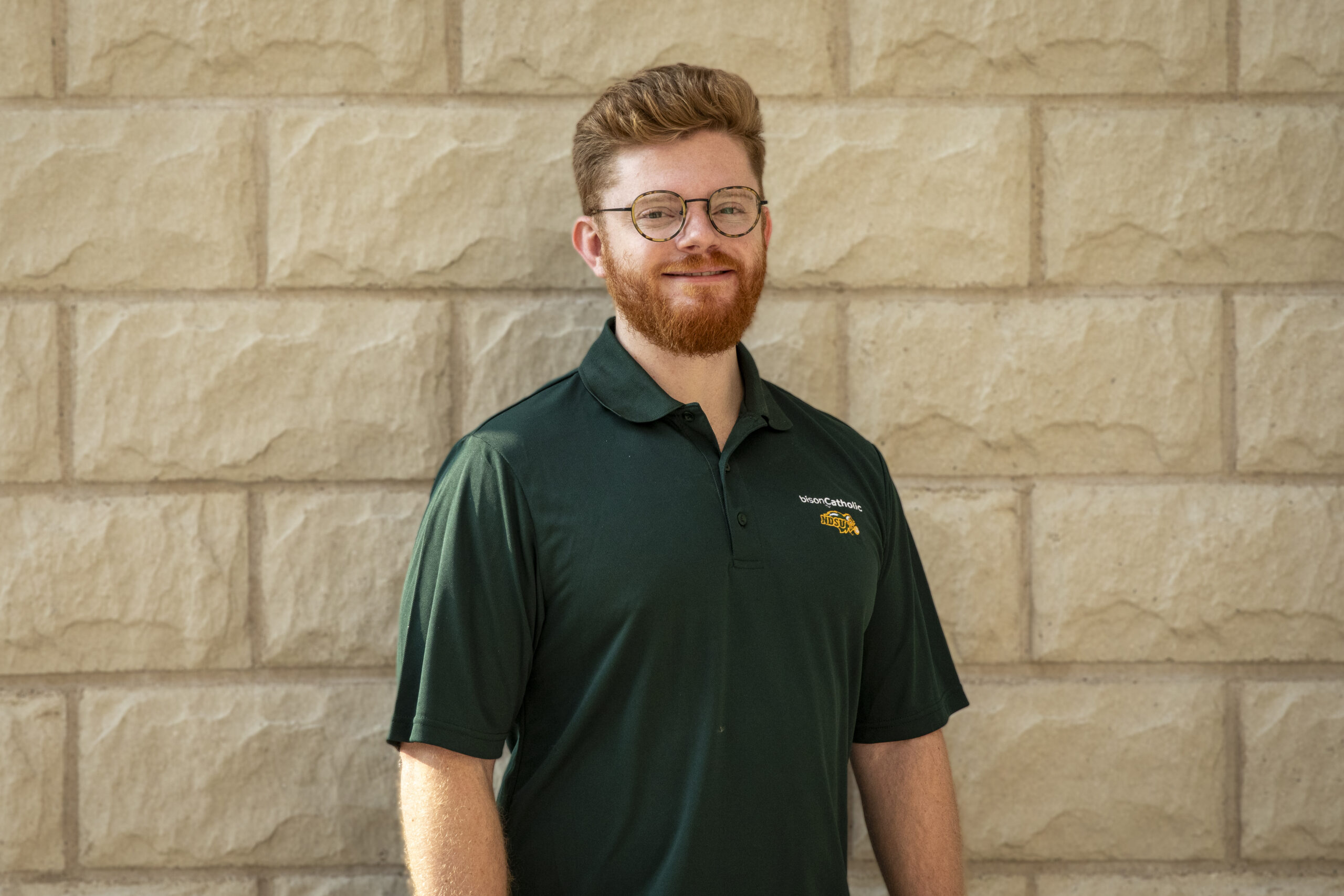
Organ Recital by Benton Schmidt
Experience the exquisite sounds of the Noack Organ, as Benton Schmidt performs a diverse program spanning from the early Baroque period to contemporary pieces.
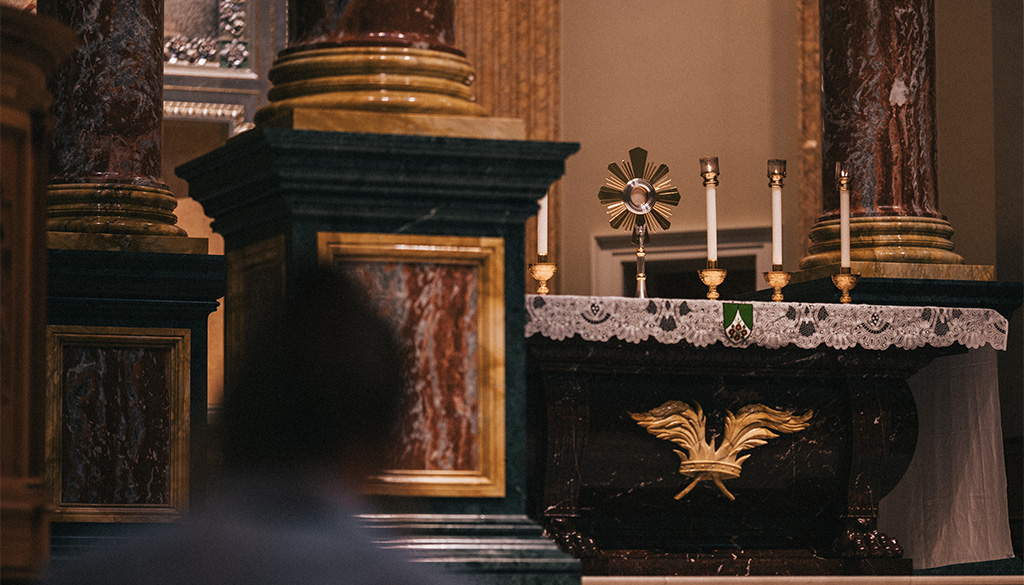
Jubilee Day of Prayer – Third Saturday of July
Every third Saturday during the Jubilee Year, beginning in the Marian month of May, through the month of the Holy Rosary in October, a reflection on the Holy Year 2025 will be given by Shrine clergy after the 12:15 pm Mass. The reflections will be on various Jubilee Year themes. July 19th, 2025 | Pilgrimage by […]

